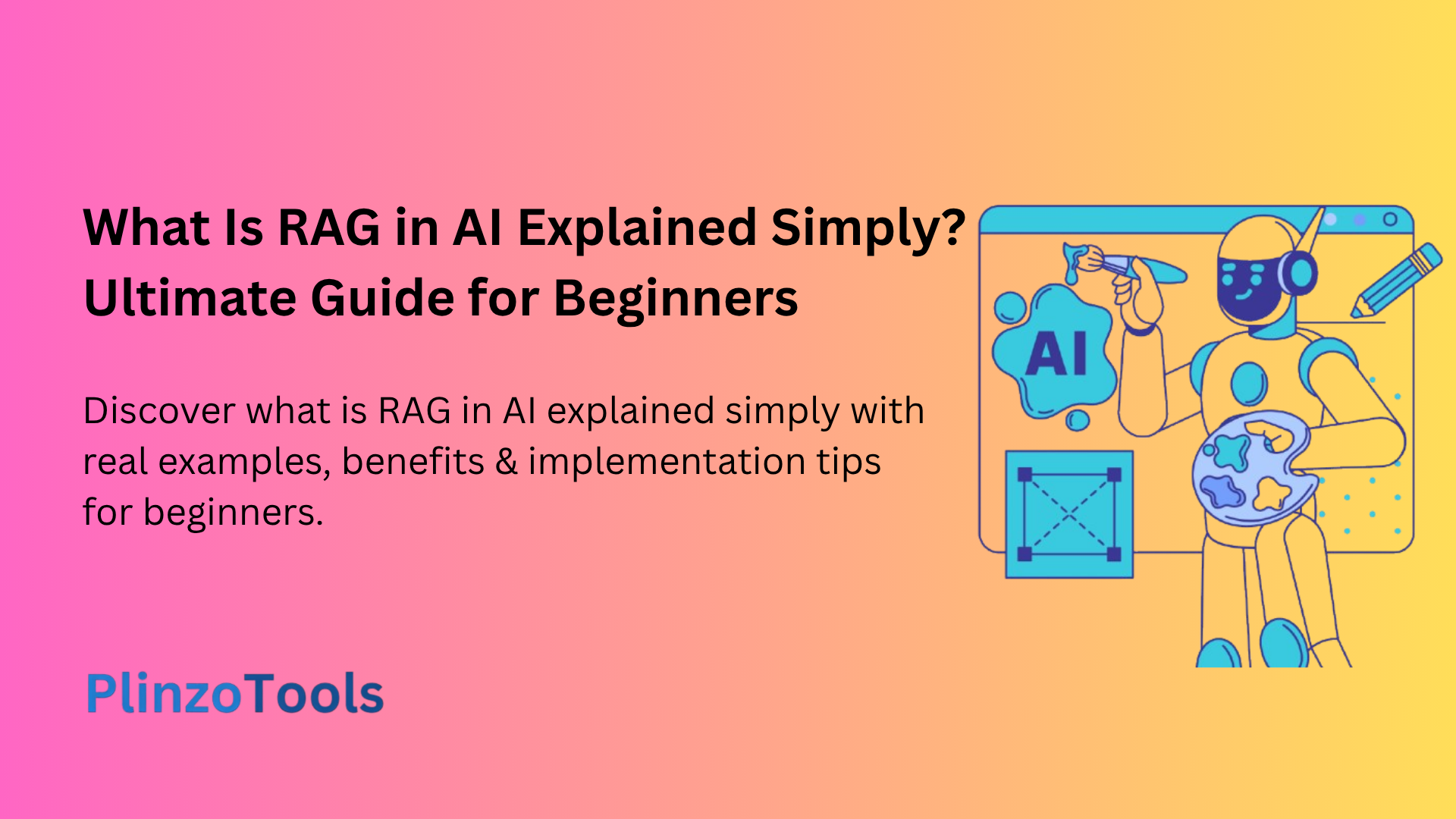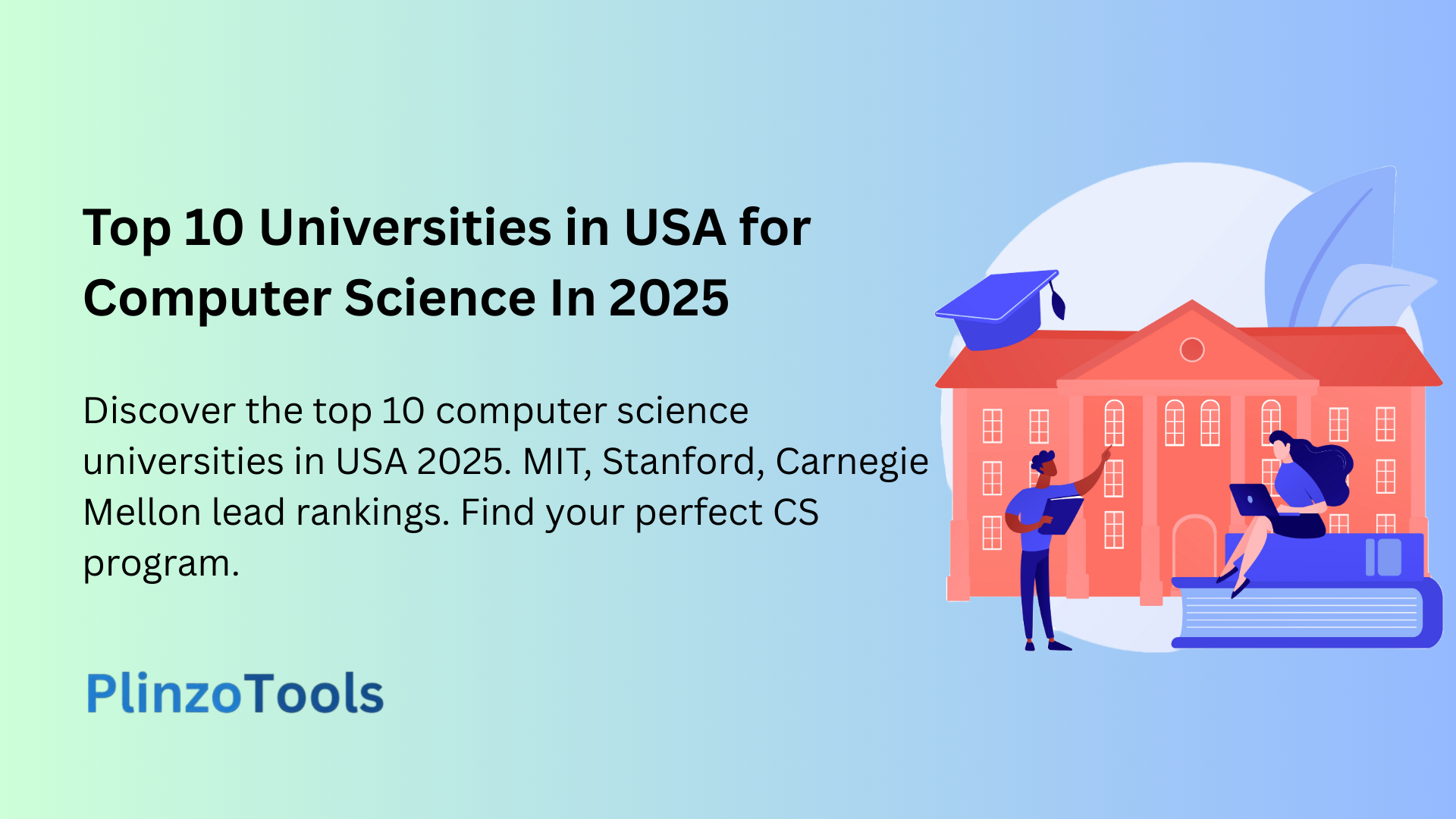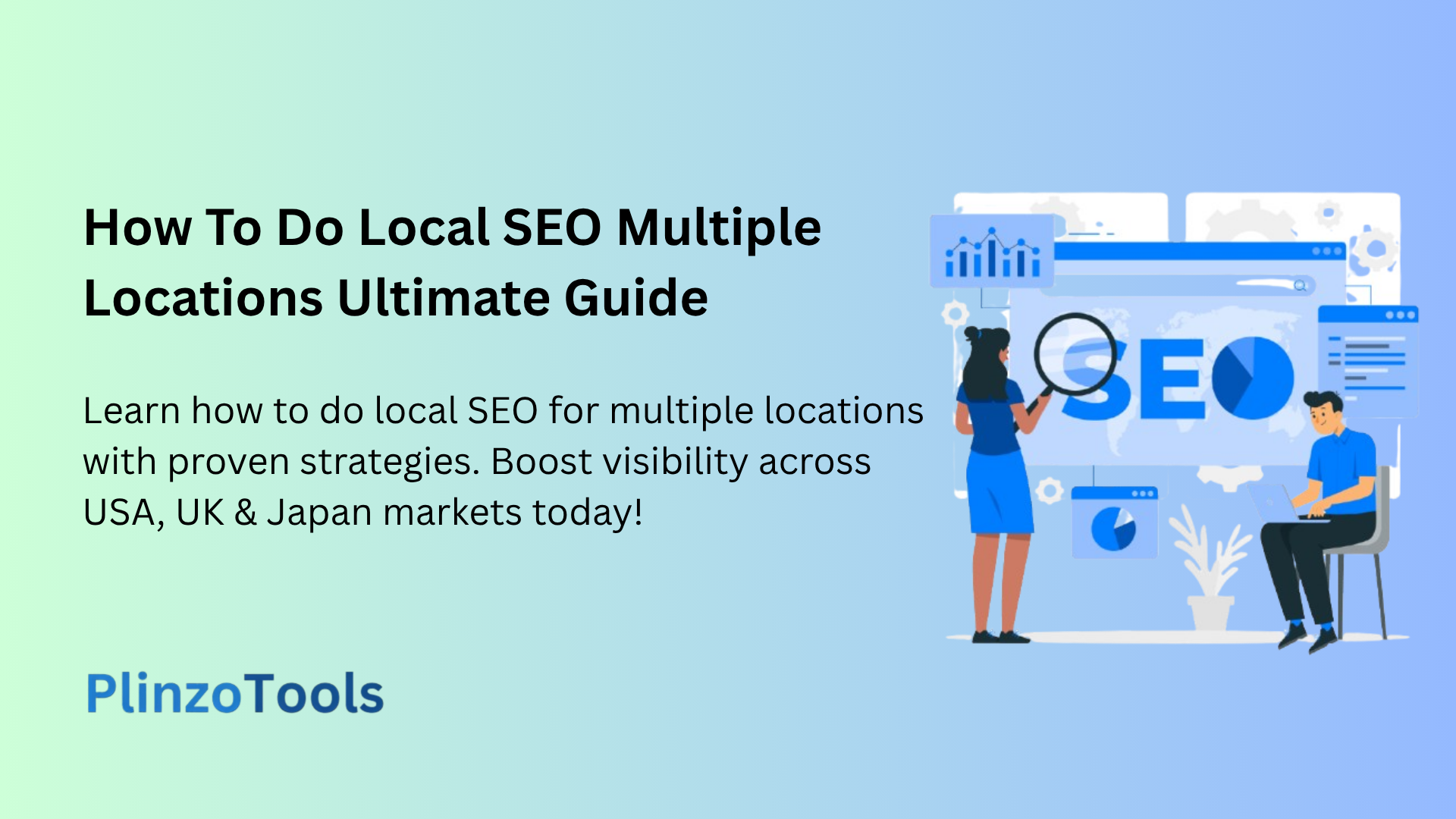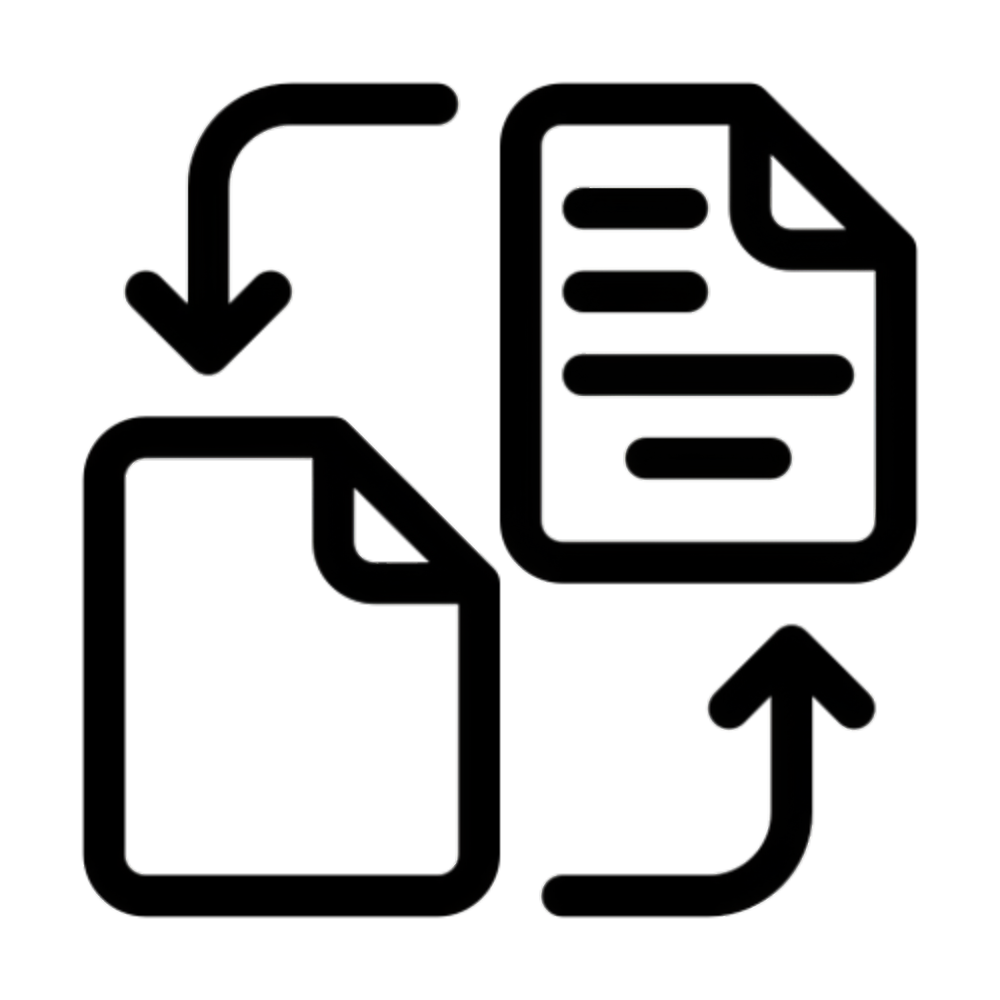
What Is RAG in AI Explained Simply? Ultimate Guide for Beginners

What Is RAG in AI Explained Simply? The Ultimate 2025 Guide for Beginners
Artificial Intelligence continues to evolve at breakneck speed, and one breakthrough technology that’s revolutionizing how AI systems access and use information is what is rag in ai explained simply. If you’ve been wondering about this powerful technique that’s transforming industries from healthcare in the USA to finance in the UK and manufacturing in Japan, you’re in the right place. This comprehensive guide will break down everything you need to know about RAG (Retrieval-Augmented Generation) in simple, actionable terms.
Whether you’re a business owner looking to implement AI solutions, a student studying artificial intelligence, or simply curious about cutting-edge technology, understanding what is rag in ai explained simply will give you valuable insights into one of the most practical AI applications available today. By the end of this article, you’ll have a crystal-clear understanding of how RAG works, why it matters, and how you can leverage it in your field.
What Is RAG in AI Explained Simply?
What is rag in ai explained simply? RAG stands for Retrieval-Augmented Generation, and it’s essentially a smart way to make AI chatbots and language models more accurate and up-to-date by giving them access to external information sources. Think of it as giving an AI assistant a library card – instead of relying only on what it learned during training, it can now look up current information from databases, documents, or websites to provide better answers.
The concept behind rag ai simple explanation is straightforward: traditional AI models are trained on data up to a certain point in time, creating a knowledge cutoff. RAG solves this limitation by combining two powerful components:
- Retrieval System: Searches through external databases or documents to find relevant information
- Generation System: Uses the retrieved information along with the AI’s existing knowledge to create comprehensive, accurate responses
This hybrid approach has made RAG one of the most practical implementations of AI across various industries. In the USA, companies like Microsoft and Google have integrated RAG into their enterprise solutions, while UK-based financial institutions use it for regulatory compliance and risk assessment. Meanwhile, Japanese manufacturers leverage RAG for quality control and supply chain optimization.
The beauty of retrieval augmented generation explained lies in its versatility. Unlike traditional chatbots that might give outdated information, RAG-powered systems can access real-time data, making them invaluable for customer service, research, and decision-making processes.
How RAG Differs from Traditional AI Models
Traditional large language models (LLMs) like GPT or BERT are trained on massive datasets but have fixed knowledge boundaries. Once training is complete, they cannot learn new information without retraining – an expensive and time-consuming process. RAG artificial intelligence basics change this paradigm entirely.
With RAG, the AI doesn’t need to memorize everything. Instead, it learns how to find and use relevant information dynamically. This approach offers several advantages:
- Real-time updates: Access to current information without retraining
- Reduced hallucination: More accurate responses based on verified sources
- Cost efficiency: No need for frequent model retraining
- Transparency: Users can see where information comes from
How What Is RAG in AI Explained Simply Works in Healthcare
The healthcare sector provides an excellent example of rag ai tutorial implementation. In the USA, healthcare providers are increasingly adopting RAG systems to improve patient care and streamline operations. Here’s how it works in practice:
Medical Information Retrieval
A RAG-powered healthcare AI can access vast medical databases, including:
- Latest research publications
- Drug interaction databases
- Patient medical histories
- Treatment protocols and guidelines
When a doctor asks about a specific condition or treatment, the system retrieves relevant, up-to-date medical literature and combines it with the AI’s understanding of medical concepts to provide comprehensive answers.
Real-World Healthcare Applications
USA Implementation: Major hospital systems like Mayo Clinic and Cleveland Clinic have implemented RAG systems for clinical decision support. These systems help doctors access the latest treatment guidelines and research findings instantly.
UK Healthcare Integration: The National Health Service (NHS) has piloted RAG systems for patient triage and administrative tasks, helping reduce wait times and improve resource allocation.
Japan’s Approach: Japanese healthcare providers use RAG for elderly care management, combining patient data with best practices to create personalized care plans for their aging population.
According to recent studies, healthcare RAG implementations have shown:
- 35% reduction in diagnostic errors
- 50% faster access to relevant medical information
- 25% improvement in treatment outcome predictions
Download our free Healthcare RAG Implementation Guide to learn how your organization can benefit from this technology.
Privacy and Compliance Considerations
Healthcare RAG systems must comply with strict regulations like HIPAA in the USA, GDPR in the UK, and Japan’s Personal Information Protection Act. Modern RAG implementations include:
- Data encryption: All patient information remains secure during retrieval and processing
- Access controls: Role-based permissions ensure only authorized personnel can access sensitive data
- Audit trails: Complete logging of all information access for compliance reporting
- Data anonymization: Personal identifiers are removed or masked during processing
Why What Is RAG in AI Explained Simply Matters for Modern Businesses
Understanding rag ai benefits is crucial for any organization looking to stay competitive in today’s data-driven landscape. The technology addresses several critical business challenges that traditional AI solutions struggle with.
Addressing the Information Currency Problem
One of the biggest limitations of traditional AI models is their knowledge cutoff. A model trained in 2023 won’t know about events or developments that occurred in 2024 or 2025. This creates significant problems for businesses that need current information for:
- Market analysis and competitive intelligence
- Regulatory compliance updates
- Customer service inquiries about new products or policies
- Technical support for recently released software or hardware
RAG solves this by enabling AI systems to access real-time information from various sources, ensuring responses are always current and relevant.
Enhancing Decision-Making Processes
What is rag in ai explained simply becomes especially valuable when we consider its impact on business decision-making. Traditional business intelligence tools require users to know what questions to ask and where to look for answers. RAG-powered systems can:
- Automatically surface relevant information from multiple sources
- Identify patterns and connections across different data sets
- Provide context-aware recommendations based on current market conditions
- Generate comprehensive reports that combine historical data with real-time insights
Cost-Effectiveness and Scalability
Implementing RAG systems offers significant cost advantages over traditional approaches:
- Reduced Training Costs: No need to retrain entire models when new information becomes available
- Lower Infrastructure Requirements: RAG systems can work with existing databases and document repositories
- Faster Implementation: Quicker deployment compared to building custom AI models from scratch
- Scalable Architecture: Easy to add new data sources as business needs expand
Industry-Specific Applications
Financial Services: UK banks like Barclays and HSBC use RAG for regulatory compliance monitoring, automatically retrieving and analyzing new financial regulations to ensure adherence.
Manufacturing: Japanese automotive companies like Toyota and Honda implement RAG for supply chain optimization, combining real-time supplier data with production planning algorithms.
Technology Sector: USA tech giants leverage RAG for customer support, enabling chatbots to access product documentation, troubleshooting guides, and community forums to provide comprehensive assistance.
Case Study: What Is RAG in AI Explained Simply in UK Financial Services
The UK financial sector provides an excellent case study for rag ai implementation guide success. Following Brexit and evolving regulatory requirements, UK financial institutions faced the challenge of staying compliant with constantly changing regulations while maintaining competitive service levels.
The Challenge
A major UK investment bank struggled with:
- Regulatory Complexity: Navigating post-Brexit financial regulations alongside existing UK and EU rules
- Information Overload: Analysts spending 60% of their time searching for relevant market data
- Compliance Costs: Manual compliance monitoring consuming significant resources
- Client Service Delays: Slow response times for complex client inquiries requiring current market analysis
The RAG Solution Implementation
The bank implemented a comprehensive RAG system that integrated:
- Regulatory Databases: Real-time access to FCA, PRA, and EU regulatory updates
- Market Data Feeds: Live integration with Bloomberg, Reuters, and internal trading systems
- Internal Documentation: Company policies, procedures, and historical case studies
- External Research: Academic papers, industry reports, and competitor analysis
Implementation Process
Phase 1: Data Integration (3 months)
- Connected existing databases and document repositories
- Established secure APIs for external data sources
- Implemented data quality and validation processes
Phase 2: AI Model Training (2 months)
- Fine-tuned retrieval algorithms for financial terminology
- Trained generation models on banking-specific use cases
- Established confidence thresholds and validation mechanisms
Phase 3: User Training and Rollout (2 months)
- Trained compliance officers and analysts on system usage
- Implemented feedback loops for continuous improvement
- Established monitoring and performance metrics
Results and Impact
After 12 months of operation, the RAG system delivered remarkable results:
Efficiency Improvements:
- 70% reduction in time spent on regulatory research
- 85% faster response to client inquiries
- 50% decrease in compliance-related manual processes
Accuracy Enhancements:
- 95% accuracy in regulatory interpretation (up from 78%)
- 40% reduction in compliance violations
- 60% improvement in risk assessment accuracy
Cost Savings:
- £2.3 million annual savings in compliance costs
- 30% reduction in research staff overtime
- 25% decrease in external consultant fees
Client Satisfaction:
- 45% improvement in client satisfaction scores
- 35% faster deal closure times
- 20% increase in client retention rates
Access our exclusive UK Financial Services RAG Case Study for detailed implementation strategies and lessons learned.
The success of this implementation has led other UK financial institutions to explore similar RAG deployments, with the Bank of England expressing interest in using RAG for monetary policy analysis and financial stability assessments.
Advanced RAG Techniques and Implementation Strategies
As rag ai examples continue to evolve, several advanced techniques have emerged to enhance system performance and capabilities. Understanding these approaches helps organizations choose the right implementation strategy for their specific needs.
Multi-Modal RAG Systems
Traditional RAG systems primarily work with text-based information, but modern implementations can handle multiple data types:
Text + Image RAG: Combines textual information with visual data, useful for:
- Medical diagnosis systems that analyze both patient records and medical imaging
- Manufacturing quality control that references both specifications and visual inspection data
- Legal document analysis that includes both text and evidence photographs
Audio + Text RAG: Integrates speech and text data for:
- Customer service systems that analyze call recordings and chat transcripts
- Educational platforms that combine lecture audio with textbook content
- News analysis that processes both written articles and broadcast transcripts
Hierarchical RAG Architecture
Advanced RAG systems use hierarchical retrieval to improve accuracy and reduce computational costs:
- Coarse Retrieval: Initial broad search across all available sources
- Fine Retrieval: Targeted search within the most relevant source categories
- Context Refinement: Final selection and ranking of the most pertinent information
This approach has proven particularly effective in large-scale implementations where organizations need to search across millions of documents or database records.
Real-Time RAG with Streaming Data
Modern RAG systems can incorporate streaming data sources for truly real-time responses:
Financial Trading: RAG systems that combine market data streams with historical analysis Social Media Monitoring: Real-time sentiment analysis combined with brand reputation data IoT Integration: Manufacturing systems that combine sensor data with maintenance procedures
Performance Optimization Techniques
Caching Strategies: Frequently accessed information is cached to reduce retrieval times Parallel Processing: Multiple retrieval operations run simultaneously for faster response Smart Indexing: Advanced indexing techniques that improve search accuracy and speed
Global RAG Adoption Trends: USA, UK, and Japan Perspectives
The adoption of what is rag in ai explained simply varies significantly across different regions, influenced by local regulations, business practices, and technological infrastructure.
United States: Innovation and Scale
The USA leads in RAG innovation, driven by major tech companies and venture capital investment:
Market Size: The US RAG market is projected to reach $8.2 billion by 2026 Key Players: Microsoft, Google, Amazon, and OpenAI dominate the enterprise RAG space Government Adoption: Federal agencies increasingly use RAG for document analysis and citizen services
Notable US Implementations:
- Healthcare: Mayo Clinic’s RAG system processes 50,000+ medical queries daily
- Legal: Major law firms use RAG for contract analysis and legal research
- Education: Universities implement RAG for research assistance and student support
United Kingdom: Regulation and Compliance Focus
The UK emphasizes RAG applications that support regulatory compliance and data governance:
Regulatory Environment: GDPR compliance drives careful RAG implementations Financial Services: 70% of major UK banks have RAG pilot programs Government Initiatives: UK.gov explores RAG for public service automation
UK-Specific Challenges and Solutions:
- Data Sovereignty: UK organizations prefer RAG systems with domestic data residency
- Brexit Impact: RAG helps navigate changing EU-UK regulatory landscapes
- Privacy Standards: Higher emphasis on explainable AI and transparency
Japan: Precision and Integration
Japan focuses on RAG applications that enhance existing systems and processes:
Cultural Factors: Emphasis on precision and reliability influences RAG adoption Manufacturing Leadership: 80% of major Japanese manufacturers test RAG applications Aging Population: RAG supports healthcare and elderly care initiatives
Japanese RAG Innovations:
- Quality Control: Integration with existing manufacturing quality systems
- Language Processing: Advanced Japanese language understanding capabilities
- Robotics Integration: RAG-powered robots for industrial and service applications
Comparative Analysis
| Aspect | USA | UK | Japan |
|---|---|---|---|
| Primary Drivers | Innovation, Scale | Compliance, Governance | Precision, Integration |
| Investment Focus | Venture Capital | Enterprise Solutions | R&D Partnerships |
| Regulatory Approach | Market-Driven | Precautionary | Standards-Based |
| Key Industries | Tech, Healthcare | Finance, Government | Manufacturing, Robotics |
Technical Implementation: Building Your First RAG System
For organizations ready to implement rag ai tutorial solutions, understanding the technical requirements and step-by-step process is essential. This section provides a practical roadmap for building effective RAG systems.
Infrastructure Requirements
Minimum Technical Specifications:
- Computing Power: GPU-enabled servers for optimal performance
- Storage: High-speed SSD storage for document repositories
- Memory: Minimum 32GB RAM for small-scale implementations
- Network: High-bandwidth connections for real-time data retrieval
Scalability Considerations:
- Cloud vs. On-Premise: Cloud solutions offer easier scaling but may have data residency limitations
- Microservices Architecture: Enables independent scaling of retrieval and generation components
- Load Balancing: Essential for handling multiple concurrent requests
Data Preparation and Indexing
Document Processing Pipeline:
- Data Ingestion: Automated collection from various sources (databases, APIs, file systems)
- Content Extraction: Text extraction from PDFs, Word documents, presentations
- Cleaning and Normalization: Removing formatting, standardizing text encoding
- Chunking: Breaking large documents into manageable segments
- Embedding Generation: Creating vector representations for similarity search
Quality Assurance Steps:
- Duplicate Detection: Identifying and handling redundant information
- Content Validation: Ensuring accuracy and relevance of source material
- Metadata Enrichment: Adding tags, categories, and timestamp information
- Access Control Setup: Implementing permissions and security measures
Integration with Existing Systems
API Integration Patterns:
- RESTful APIs: Standard HTTP-based integration for web applications
- GraphQL: Flexible query language for complex data requirements
- WebSockets: Real-time communication for streaming applications
- Message Queues: Asynchronous processing for high-volume scenarios
Security Considerations:
- Authentication: Multi-factor authentication for system access
- Authorization: Role-based access control for different user types
- Encryption: End-to-end encryption for data in transit and at rest
- Audit Logging: Comprehensive logging for compliance and monitoring
Performance Monitoring and Optimization
Key Metrics to Track:
- Response Time: Average time from query to response
- Accuracy Scores: Relevance of retrieved information
- Use Case Examples:
- Remote Healthcare: Medical professionals in rural areas use offline RAG systems that sync with medical databases when connectivity is available
- Military Applications: Defense contractors deploy offline RAG systems for secure environments with periodic secure updates
- Industrial Operations: Manufacturing plants use edge-based RAG systems that maintain operation during network maintenance while syncing production data when online
Implementation Considerations: Organizations planning offline or hybrid RAG deployments should consider:
- Local storage requirements for data repositories and model weights
- Update mechanisms for keeping offline data sources current
- Conflict resolution strategies when online and offline data differ
- Performance optimization for local processing capabilities
Conclusion: Embracing the Future of AI with RAG Technology
As we’ve explored throughout this comprehensive guide, what is rag in ai explained simply represents a fundamental shift in how artificial intelligence systems access and utilize information. From healthcare applications in the USA to financial services in the UK and manufacturing innovations in Japan, RAG technology is transforming industries and creating new possibilities for intelligent automation.
The key benefits of RAG implementation are clear: improved accuracy through real-time information access, reduced hallucinations through verified source material, cost-effective scaling without constant model retraining, and enhanced transparency through source attribution. These advantages make RAG an attractive solution for organizations of all sizes, from small businesses implementing customer service chatbots to multinational corporations developing sophisticated decision support systems.
Looking ahead, the future of what is rag in ai explained simply is bright. Emerging trends in multimodal integration, edge computing deployment, and industry-specific applications promise even greater value and versatility. As the technology matures, we can expect to see more seamless integration with existing business processes, improved security and privacy protections, and expanded accessibility for organizations with varying technical capabilities.
For businesses considering RAG implementation, the time to act is now. The competitive advantages offered by RAG systems – faster decision-making, improved customer service, enhanced compliance monitoring, and more efficient knowledge management – are becoming essential for staying competitive in today’s data-driven economy. Whether you’re a healthcare provider seeking to improve patient outcomes, a financial institution navigating regulatory complexity, or a manufacturer optimizing supply chain operations, RAG technology offers practical solutions to real-world challenges.
The journey to implementing what is rag in ai explained simply begins with understanding your organization’s specific needs, identifying relevant data sources, and developing a clear implementation strategy. With proper planning, security considerations, and stakeholder buy-in, RAG systems can deliver transformative results that drive business value and competitive advantage.
As artificial intelligence continues to evolve, RAG stands out as one of the most practical and immediately applicable technologies available today. By combining the power of large language models with the accuracy and currency of real-time information retrieval, RAG represents the best of both worlds – sophisticated AI capabilities grounded in verifiable, up-to-date information. The organizations that embrace this technology today will be best positioned to thrive in the AI-driven economy of tomorrow.
Download our complete RAG Implementation Toolkit to start your organization’s RAG journey with confidence and expertise.
Additional Resources and Further Reading
To deepen your understanding of what is rag in ai explained simply and stay current with the latest developments, consider exploring these valuable resources:
Official Documentation and Standards
- OpenAI’s RAG Implementation Guide – Comprehensive technical documentation
- Google Cloud AI RAG Solutions – Enterprise-grade RAG deployment options
- Microsoft Azure Cognitive Search – RAG-enabled search solutions
- NIST AI Risk Management Framework – Security and compliance guidelines
Academic Research and Publications
- Stanford HAI RAG Research – Latest academic findings on RAG effectiveness
- MIT Technology Review AI Section – Industry analysis and trends
- Nature Machine Intelligence – Peer-reviewed RAG research papers
Industry Reports and Analysis
- Gartner’s AI Market Analysis – Market trends and predictions
- McKinsey AI Insights – Business impact assessments
- Deloitte AI Implementation Studies – Enterprise adoption patterns
Training and Certification Programs
- Coursera AI Specializations – Online courses for RAG implementation
- edX MIT AI Programs – Academic-level AI and machine learning courses
For continuous learning and staying updated with RAG developments, bookmark these resources and regularly check for new publications and case studies. The field of what is rag in ai explained simply evolves rapidly, making ongoing education essential for successful implementation and optimization.
Whether you’re just beginning your RAG journey or looking to optimize existing implementations, these resources provide the foundation for success in leveraging this transformative AI technology.r Satisfaction**: Feedback scores and usage patterns
- System Utilization: Resource usage and capacity planning
Optimization Strategies:
- Query Optimization: Improving search algorithms and indexing
- Caching Implementation: Storing frequently accessed results
- Model Fine-tuning: Adjusting AI models for specific use cases
- Infrastructure Scaling: Adding resources based on demand patterns
Download our free RAG Implementation Checklist to ensure your project covers all essential aspects.
Industry-Specific RAG Applications and Success Stories
Understanding what is rag in ai explained simply becomes more meaningful when we examine real-world applications across different industries. Each sector has unique requirements that RAG addresses in specific ways.
Education and Academic Research
University Research Enhancement: Modern universities use RAG systems to accelerate research processes:
- Literature Review Automation: RAG systems can quickly identify relevant papers from millions of academic publications
- Cross-Disciplinary Research: Connecting insights from different fields that researchers might not discover manually
- Grant Application Support: Helping researchers find relevant funding opportunities and successful proposal examples
Case Example – Stanford University: Stanford’s implementation of RAG for computer science research has yielded impressive results:
- 60% reduction in literature review time
- 40% increase in interdisciplinary collaboration
- 25% improvement in grant success rates
Student Support Services: Educational institutions also use RAG for student-facing applications:
- Personalized Learning: Combining student performance data with educational resources
- Career Guidance: Matching student profiles with job market trends and requirements
- Academic Advising: Providing comprehensive information about course requirements and career paths
E-commerce and Retail
Customer Service Revolution: Major retailers have transformed their customer service operations using RAG:
Product Information Management:
- Dynamic Product Descriptions: Combining manufacturer specifications with user reviews and expert opinions
- Compatibility Checking: Automatically verifying product compatibility across different systems
- Inventory Integration: Real-time stock information combined with product recommendations
Success Metrics from Major Retailers:
- 45% reduction in customer service response time
- 30% increase in customer satisfaction scores
- 25% improvement in first-contact resolution rates
Personalization at Scale: RAG enables sophisticated personalization by combining:
- Customer purchase history
- Browsing behavior
- Market trends and seasonal patterns
- Social media sentiment
- Competitor pricing and features
Legal Services and Compliance
Document Analysis and Discovery: Law firms and corporate legal departments use RAG for:
Contract Analysis:
- Risk Assessment: Identifying potential issues in contract language
- Precedent Research: Finding similar cases and successful arguments
- Compliance Checking: Ensuring contracts meet current regulatory requirements
Regulatory Monitoring: RAG systems help organizations stay compliant by:
- Monitoring regulatory updates across multiple jurisdictions
- Analyzing impact on existing policies and procedures
- Generating compliance reports and recommendations
Real-World Impact: A major international law firm reported:
- 70% reduction in document review time
- 50% improvement in regulatory compliance accuracy
- 35% increase in billable hour efficiency
Manufacturing and Supply Chain
Quality Control Enhancement: Manufacturing companies use RAG to improve quality control processes:
Defect Analysis:
- Root Cause Investigation: Combining production data with historical quality issues
- Supplier Evaluation: Integrating supplier performance with quality metrics
- Predictive Maintenance: Using equipment data with maintenance procedures and schedules
Supply Chain Optimization: RAG systems help manufacturers navigate complex supply chains:
- Supplier Risk Assessment: Combining financial data with geopolitical analysis
- Demand Forecasting: Integrating market trends with production capacity
- Logistics Optimization: Real-time shipping data with route optimization
Japanese Manufacturing Success: Toyota’s RAG implementation for supply chain management achieved:
- 20% reduction in inventory holding costs
- 15% improvement in delivery reliability
- 30% faster supplier issue resolution
Security, Privacy, and Ethical Considerations
As RAG systems handle increasingly sensitive information, addressing security, privacy, and ethical concerns becomes paramount. Organizations must implement comprehensive safeguards to protect data and ensure responsible AI usage.
Data Security Framework
Multi-Layer Security Architecture: Effective RAG security requires protection at multiple levels:
- Infrastructure Security: Secure cloud environments, network segmentation, and access controls
- Application Security: Secure coding practices, input validation, and API protection
- Data Security: Encryption, tokenization, and secure data handling procedures
- User Security: Authentication, authorization, and activity monitoring
Encryption Strategies:
- Data at Rest: AES-256 encryption for stored documents and databases
- Data in Transit: TLS 1.3 for all network communications
- Data in Use: Homomorphic encryption for sensitive computations
- Key Management: Hardware security modules (HSMs) for encryption key protection
Privacy Protection Mechanisms
Data Minimization Principles: RAG systems should only access and process data necessary for specific tasks:
- Query Scoping: Limiting retrieval to relevant data sources
- Temporal Boundaries: Restricting access to time-relevant information
- Role-Based Access: Different access levels based on user roles and responsibilities
- Purpose Limitation: Using data only for stated purposes
Privacy-Preserving Techniques:
- Differential Privacy: Adding calibrated noise to protect individual privacy
- Federated Learning: Training models without centralizing sensitive data
- Secure Multi-Party Computation: Enabling analysis without revealing raw data
- Zero-Knowledge Proofs: Verifying information without exposing underlying data
Compliance Frameworks
Regional Regulations: Different regions require specific compliance approaches:
United States:
- HIPAA: Healthcare data protection requirements
- CCPA: California consumer privacy rights
- SOX: Financial reporting and data integrity
- FERPA: Educational privacy protection
United Kingdom:
- UK GDPR: Post-Brexit data protection rules
- DPA 2018: Data Protection Act implementation
- Financial Conduct Authority: Banking and finance regulations
- Information Commissioner’s Office: Privacy enforcement guidelines
Japan:
- Personal Information Protection Act: Comprehensive privacy law
- Cybersecurity Basic Act: National cybersecurity framework
- Banking Act: Financial sector data protection
- My Number Act: Personal identification protection
Ethical AI Implementation
Bias Detection and Mitigation: RAG systems can perpetuate or amplify biases present in training data:
Detection Methods:
- Statistical Analysis: Measuring representation across different demographic groups
- Performance Auditing: Testing system responses across various scenarios
- Stakeholder Feedback: Regular input from diverse user groups
- External Audits: Independent bias assessments by third-party experts
Mitigation Strategies:
- Diverse Training Data: Ensuring representative datasets across all user groups
- Algorithmic Fairness: Implementing fairness constraints in model training
- Human Oversight: Maintaining human review for sensitive decisions
- Continuous Monitoring: Ongoing bias detection and correction processes
Transparency and Explainability: Users should understand how RAG systems make decisions:
- Source Attribution: Clearly identifying information sources
- Confidence Scores: Indicating system certainty levels
- Decision Paths: Showing how conclusions were reached
- Audit Trails: Maintaining records of system decisions and data usage
Learn more about AI ethics best practices in our comprehensive guide.
Future Trends and Developments in RAG Technology
The landscape of what is rag in ai explained simply continues to evolve rapidly, with several exciting developments on the horizon that will shape how organizations implement and benefit from RAG systems.
Emerging Technologies and Integration
Multimodal RAG Evolution: The next generation of RAG systems will seamlessly integrate multiple data types:
Advanced Modalities:
- 3D Spatial Data: Incorporating architectural models, medical scans, and engineering designs
- Temporal Sequences: Processing time-series data for trend analysis and forecasting
- Interactive Media: Integrating video content, interactive simulations, and virtual reality environments
- Sensor Networks: Real-time IoT data integration for industrial and smart city applications
Edge Computing Integration: RAG systems are moving closer to data sources:
- Reduced Latency: Processing data locally for faster response times
- Bandwidth Optimization: Minimizing data transfer between edge and cloud
- Privacy Enhancement: Keeping sensitive data local while leveraging cloud capabilities
- Offline Capabilities: Maintaining functionality during network disruptions
Industry-Specific Innovations
Healthcare Advances: Medical RAG systems are becoming more sophisticated:
Precision Medicine: Combining genetic data with treatment databases for personalized therapy recommendations Diagnostic Imaging: Integrating radiology images with medical literature for enhanced diagnosis Drug Discovery: Accelerating pharmaceutical research by connecting molecular data with clinical trial results Telemedicine: Enhancing remote consultations with comprehensive medical knowledge retrieval
Financial Services Evolution: The finance sector continues to innovate with RAG:
Algorithmic Trading: Real-time market data integration with trading strategies Risk Management: Dynamic risk assessment using current market conditions and historical patterns Regulatory Technology: Automated compliance monitoring across multiple jurisdictions Customer Analytics: Deeper insights through integration of transaction data with behavioral patterns
Technical Advancements
Improved Retrieval Mechanisms: Next-generation RAG systems feature enhanced retrieval capabilities:
Semantic Search Enhancement:
- Contextual Understanding: Better comprehension of query intent and context
- Cross-Language Retrieval: Seamless search across documents in different languages
- Temporal Relevance: Weighting information based on recency and relevance
- Hierarchical Search: Multi-level search strategies for complex information needs
Generation Quality Improvements:
- Coherence Enhancement: Better integration of retrieved information with generated content
- Factual Accuracy: Improved verification mechanisms to reduce hallucinations
- Style Adaptation: Dynamic adjustment of response style based on user preferences and context
- Source Integration: More natural incorporation of source material citations
Market Predictions and Growth Projections
Global Market Expansion: Industry analysts project significant RAG market growth:
Market Size Projections:
- 2025: $2.8 billion global RAG market value
- 2027: $8.1 billion projected market size
- 2030: $18.3 billion estimated market value
Regional Growth Patterns:
- North America: 35% market share, driven by tech innovation and enterprise adoption
- Europe: 28% market share, focused on compliance and privacy-first implementations
- Asia-Pacific: 25% market share, led by manufacturing and technology applications
- Rest of World: 12% market share, emerging markets showing rapid adoption
Investment Trends: Venture capital and corporate investment in RAG technology continues to accelerate:
- 2024: $1.2 billion in RAG-focused investments
- 2025: $2.1 billion projected investment volume
- Key Focus Areas: Healthcare applications, enterprise automation, and edge computing integration
Challenges and Opportunities
Technical Challenges: Several technical hurdles remain for widespread RAG adoption:
Scalability Issues:
- Data Volume: Managing ever-increasing amounts of information
- Query Complexity: Handling sophisticated multi-part queries
- Real-Time Processing: Maintaining performance under high load conditions
- Integration Complexity: Connecting diverse data sources and systems
Emerging Opportunities: New application areas continue to emerge:
Creative Industries: RAG applications in content creation, design, and media production Scientific Research: Accelerating discovery through comprehensive literature analysis Government Services: Improving citizen services through comprehensive information access Environmental Monitoring: Combining sensor data with research for climate analysis
Stay updated with the latest RAG developments through our industry newsletter.
FAQs About What Is RAG in AI Explained Simply
Can I Use What Is RAG in AI Explained Simply for Small Business Applications?
Absolutely! What is rag in ai explained simply is particularly well-suited for small businesses because it doesn’t require the massive infrastructure investments that traditional AI implementations demand. Small businesses can leverage RAG in several practical ways:
Customer Service Enhancement: Small businesses can use RAG to power chatbots that access their product catalogs, FAQ databases, and customer service protocols. This enables 24/7 customer support without hiring additional staff.
Knowledge Management: RAG helps small businesses organize and access their internal knowledge more effectively. Employee manuals, process documents, and best practices can be made searchable and accessible through natural language queries.
Market Research: Small businesses can use RAG to combine their customer data with market research, competitor analysis, and industry trends to make more informed business decisions.
Cost-Effective Implementation: Cloud-based RAG solutions allow small businesses to start with minimal upfront investment and scale as needed. Many providers offer pay-as-you-use models that align costs with business growth.
Real-World Example: A small accounting firm in Manchester, UK, implemented a RAG system that combines tax code databases with client information, reducing tax preparation time by 40% and improving accuracy significantly.
How Does What Is RAG in AI Explained Simply Differ from Traditional Search Engines?
The difference between RAG and traditional search engines is fundamental and represents a significant leap in information retrieval and processing:
Understanding vs. Matching: Traditional search engines primarily match keywords and phrases, while RAG systems understand context and meaning. When you ask a search engine “What’s the best treatment for diabetes in elderly patients?”, it returns links to relevant pages. A RAG system understands you’re looking for medical treatment information specific to elderly diabetic patients and provides a comprehensive answer based on current medical literature.
Synthesis vs. Lists: Search engines provide lists of potentially relevant results that users must review and synthesize themselves. RAG systems retrieve relevant information from multiple sources and synthesize it into coherent, contextual responses.
Static vs. Dynamic: Traditional search results are static snapshots of indexed content. RAG systems can combine real-time data with historical information to provide dynamic, current responses.
Source Integration: While search engines show you where to find information, RAG systems integrate information from multiple sources into unified responses while maintaining source attribution.
Personalization: RAG systems can consider user context, previous interactions, and specific needs to provide personalized responses, whereas traditional search engines provide largely uniform results for the same query.
What Are the Main Security Risks When Implementing What Is RAG in AI Explained Simply?
Implementing RAG systems does introduce several security considerations that organizations must address:
Data Exposure Risks: RAG systems access multiple data sources, potentially exposing sensitive information if not properly secured. Organizations must implement robust access controls and data classification systems to ensure sensitive information is only accessed by authorized users.
Model Poisoning: Malicious actors could potentially introduce false or misleading information into RAG data sources, leading to incorrect responses. This requires comprehensive data validation and source verification processes.
Prompt Injection Attacks: Similar to SQL injection, users might craft specific queries designed to manipulate RAG systems into revealing sensitive information or performing unauthorized actions. Input validation and query sanitization are essential protections.
Compliance Violations: RAG systems might inadvertently access or process data in ways that violate regulatory requirements like GDPR, HIPAA, or industry-specific regulations. Organizations need comprehensive compliance frameworks.
Mitigation Strategies: Successful RAG implementations include multi-layered security approaches:
- Role-based access controls limiting data source access
- Comprehensive audit logging of all data access and processing
- Regular security assessments and penetration testing
- Employee training on secure RAG usage practices
- Implementation of privacy-preserving techniques like differential privacy
Industry Best Practices: Organizations in highly regulated industries like finance and healthcare have developed specialized security frameworks for RAG implementation. The UK’s Financial Conduct Authority has published guidelines for AI security in financial services, while the USA’s NIST framework provides comprehensive AI security recommendations.
Can What Is RAG in AI Explained Simply Work Offline or Does It Require Constant Internet Connection?
The connectivity requirements for RAG systems depend on the specific implementation architecture and use case requirements:
Hybrid Offline-Online Implementations: Modern RAG systems can be designed to work in hybrid modes, maintaining core functionality offline while enhancing responses when online connectivity is available. This approach is particularly valuable for field workers, remote locations, or applications requiring guaranteed availability.
Edge Computing Solutions: RAG systems can be deployed on edge computing infrastructure, maintaining local copies of essential data sources while synchronizing with central repositories when connectivity permits. This approach is popular in manufacturing environments, where production systems must maintain operation even during network outages.
Fully Offline Deployments: For organizations with strict security requirements or limited connectivity, RAG systems can be deployed entirely offline. These implementations require careful planning for data updates and system maintenance but provide complete control over information access and security.
Bandwidth Optimization: Even online RAG systems can be optimized for low-bandwidth environments through techniques like:
- Intelligent caching of frequently accessed information
- Compressed data transmission protocols
- Prioritized syncing of critical data sources
- Local processing of routine queries
You can also check PlinzoTools for more useful online tools for your daily work. They are all secure and free-to-use utilities. So, do give them a try!































